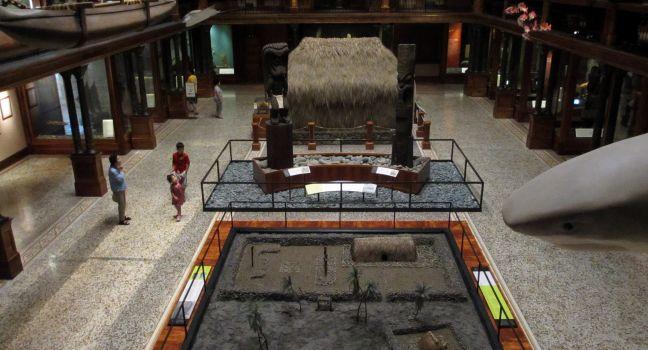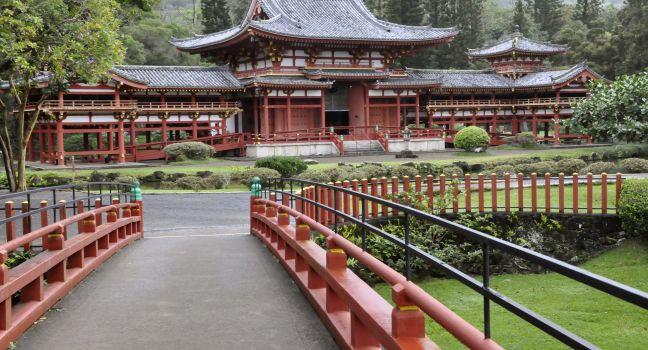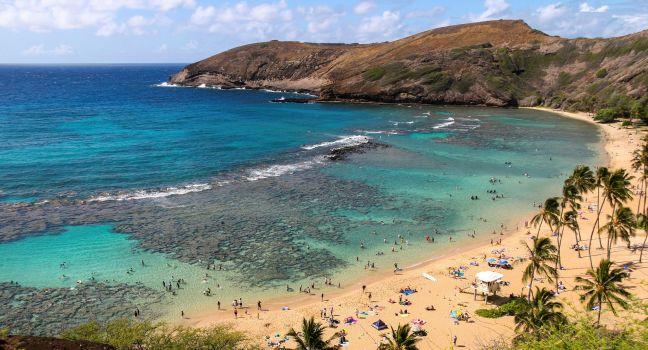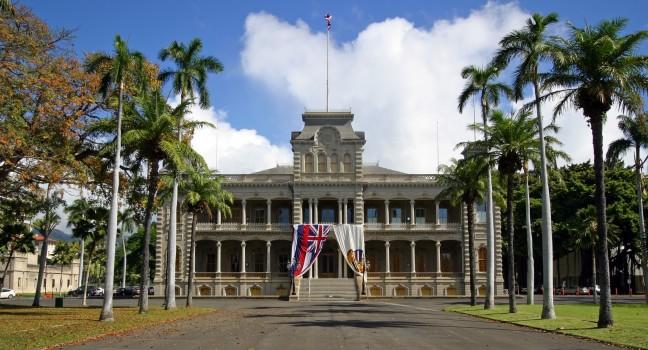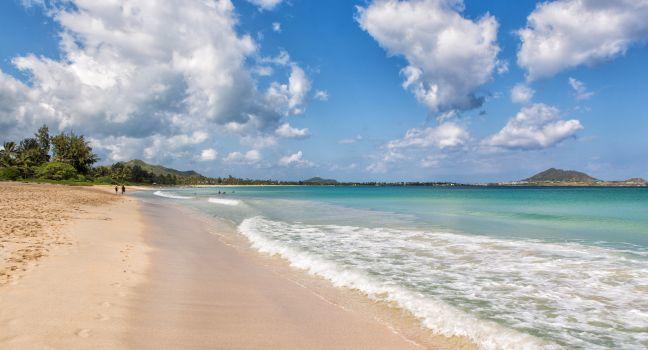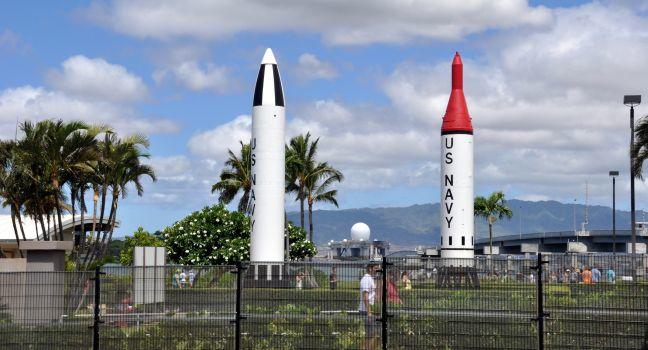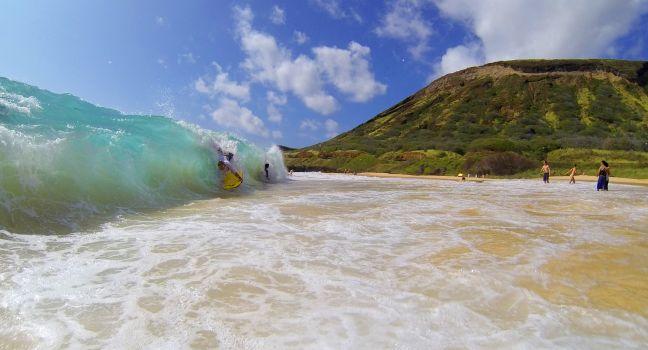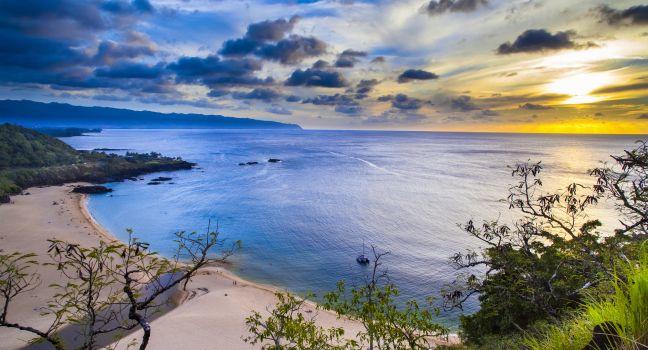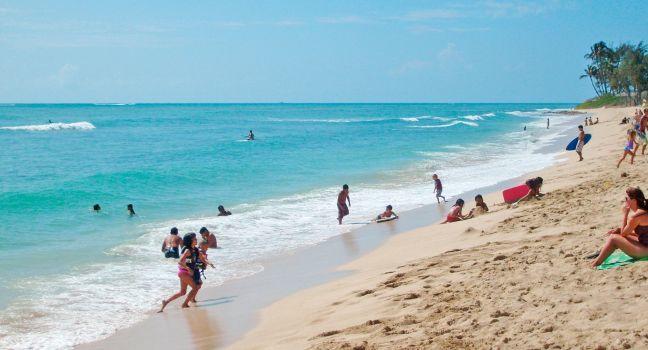Oahu is one-stop Hawaii—all the allure of the Islands in a plate-lunch mix that has you kayaking around offshore islets by day and sitting in a jazz club 'round midnight, all without ever having to take another flight or repack your suitcase. It offers both the buzz of modern living in jam-packed Honolulu (the state's capital) and the allure of slow-paced island life on its northern and eastern shores. It is, in many ways, the center of the Hawaiian universe.
There are more museums, staffed historic sites, and guided tours here than you'll find on any other island. And only here do a wealth of renovated buildings and well-preserved neighborhoods so clearly spin the story of Hawaii's history. It's the only place to experience Islands-style urbanity, since there are no other true cities in the state. And yet you can get as lost in the rural landscape and be as laid-back as you wish.
Oahu is home to Waikiki, the most famous Hawaiian beach, as well as some of the world's most famous surf on the North Shore, and Hawaii's best-known historical site—Pearl Harbor. If it's isolation, peace, and quiet you want, Oahu might not be for you, but if you'd like a bit of spice with your piece of paradise, this island provides it.
Encompassing 597 square miles, Oahu is the third-largest island in the Hawaiian chain. Scientists believe the island was formed about 4 million years ago by three shield volcanoes: Waianae, Koolau, and the recently discovered Kaena. Recognized in mid-2014, Kaena is the oldest of the three and has long since been submerged 62 miles from Kaena Point on Oahu's northwestern side. Waianae created the mountain range on the western side of the island, whereas Koolau shapes the eastern side. Central Oahu is an elevated plateau bordered by the two mountain ranges, with Pearl Harbor to the south. Several of Oahu's most famous natural landmarks, including Diamond Head and Hanauma Bay, are tuff rings and cinder cones formed during a renewed volcanic stage (roughly 1 million years ago).
The northern and eastern sides of Oahu—and of each Hawaiian island—are together referred to as the Windward side, and generally have a cooler, wetter climate. The island's southern and western sides are commonly called the Leeward side, and are typically warmer and more arid. The island's official flower, the little orange ilima, grows predominantly in the east, but lei throughout the island incorporate ilima. Numerous tropical fish call the reef at Hanauma Bay home, migrating humpback whales can be spotted off the coast past Waikiki and Diamond Head December–April, spinner dolphins pop in and out of the island's bays, and the 15 islets off Oahu's eastern coast provide refuge for endangered seabirds.
Oahu is the most visited Hawaiian island because early tourism to Hawaii started here. It's also the most inhabited island today—69% of the state's population lives on Oahu—due to job opportunities and the island's military bases. Although Kilauea volcano on Hawaii was a tourist attraction in the late 1800s, it was the building of the Moana Hotel on Waikiki Beach in 1901 and subsequent advertising of Hawaii to wealthy San Franciscans that really fueled tourism in the Islands. Oahu was drawing tens of thousands of guests yearly when, on December 7, 1941, Japanese Zeros appeared at dawn to bomb Pearl Harbor. Though tourism understandably dipped during the war (Waikiki Beach was fenced with barbed wire), the subsequent memorial only seemed to attract more visitors, and Oahu remains hugely popular with tourists—especially the Japanese—to this day.

